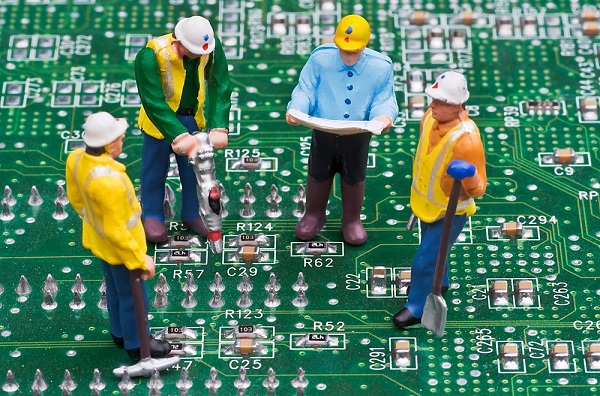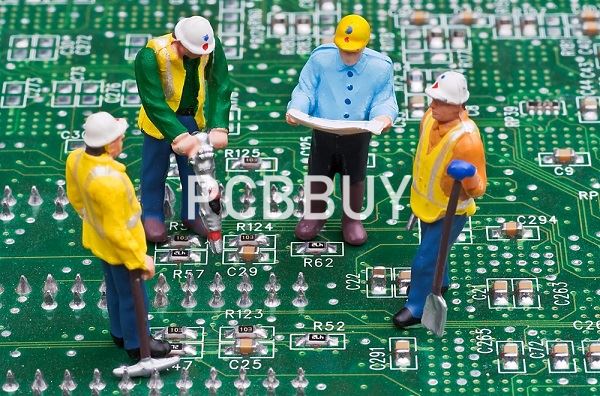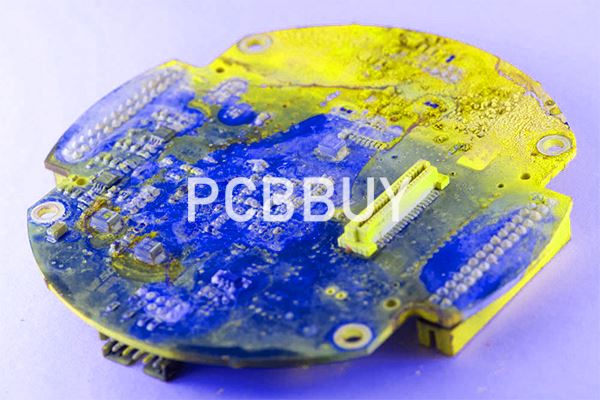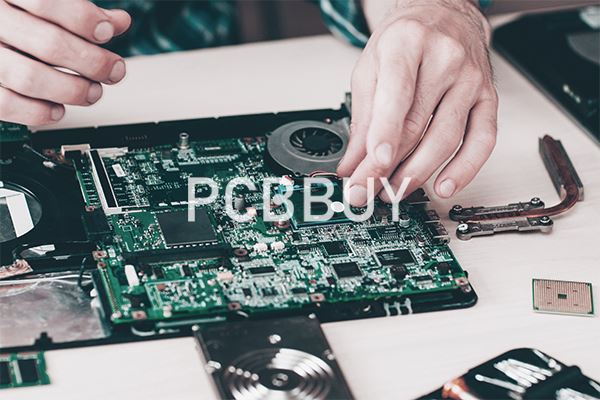What Are 5 Tips of Plating in PCB Manufacturing Process?
By:PCBBUY 04/20/2022 09:49

As you know, there are a great deal of challenges for a multilayer PCB manufacturer mainly in how to prepare the plated edges and the life span adhesion of the plated material, what’s more, it needs the precision handling in PCB manufacturing that is used for edge PCB soldering. We can make sure that the PCB edge castellation thoroughly prepares edges surfaces, which applies the plated copper for prompt adhesion and processes the circuit board to make sure the long-term adhesion between each layer.
In this passage, we will provide all the details about PCB plating. If you are curious about the information of PCB plating, please check and read the content below.

What are the PCB plating materials?
Via Plating
Via plating has only one material known to everyone which is copper.
Surface finishing
There are 4 materials in surface finishing which are Gold, Nickel, Tin, and Silver.
The type of PCB surface finish materials you use matters a lot. It’s because there are loads of merits and demerits for each material. So, you need to check them out and weigh your options.
Generally, you need also to consider the various types of PCB finishes you use for your PCB fabrication. So, it would help if you chose them based on their various features. That’s why we’d be talking about the different PCB finishes type in the next section.
How to process PCB plating on surface finish?
Different types of surface finishes can be used on a circuit board depending on what kind of protection the board needs:
HASL (Hot Air Solder Leveling)
Up until recently, HASL has been the most widely used surface finish in the industry. The circuit board would be dipped into a molten pool of solder and then run through hot blasts of air to remove the excess. HASL is a low-cost operation available almost anywhere. It has a long shelf life and is easy to use. The downside of HASL is that it leaves uneven surfaces that can cause solder bridging and are not detailed enough for fine pitch components.
ENIG (Electroless Nickel Immersion Gold)
ENIG has become one of the most popular surface finishes currently being applied to circuit boards. It is composed of two layers of metal coatings, with the first being a layer of nickel that is chemically plated to the board. The nickel provides a barrier of protection for the copper and then, in turn, is protected from oxidation by a thin layer of gold. ENIG has excellent surface planarity making it ideal for soldering fine pitch components. It complies with the Restriction of Hazardous Substances (RoHS) requirements and is durable with a long shelf life. On the other hand, it is more expensive than other finishes, such as HASL.

What are the special considerations of PCB plating?
Dissimilar Metal over Metal to Protect Bare Copper
Precious metals are not as easy to obtain or work with but those are the leading partners for plating in today’s consumer market. Gold does not readily bond with copper. Using an intermediate layer of nickel solves this intermetallic issue and is the formula we know best for surface-mount components with via-in-pad technology. Electroless Nickel / Immersion Gold (ENIG) is a very popular finish because it takes to solder really well and does a commendable job of protecting the copper prior to soldering.
When it comes to the stack-ups for flexible printed circuits, the additional plating is normally documented in the stack-up diagram. The added copper stiffens a flex and that may be undesirable. That being the case, we would look into button plating which is more selective than panel plating. As a rule, all plating, masking, covering, marking and stiffening on an FPC is going to be a material designed for that purpose.
For an FPC, the copper itself is annealed, that is to say softened by passing the sheet through two big rollers that squeeze it down again and again. This creates a granular alignment that provides a smooth outer surface for the traces that actually improves signal integrity. It is specified as “rolled annealed copper” or just RA cu. for shorthand.
What are the advantages of edge plating in PCB?
But there are more benefits to the performance of your printed board when it’s edge plating.

Thermal Distribution
One of the key benefits of edge plating is its ability to support thermal distribution. Similar to thermal vias, when components become overheated, they are more likely to fail, causing potentially critical damage to the board itself. As customers design circuit boards with more capabilities, using more components tightly packed onto smaller boards, effective thermal distribution becomes essential to channel excessive heat away from temperature-sensitive components. Without the ability to escape, the heat will compromise the performance and reliability of the board.
Signal Integrit
Edge plating can also improve signal integrity. Signal integrity is becoming more important as PCB boards are becoming more complex, demanding faster connections and more complex layouts. Plating on PCB edge is fairly straight forward process in terms of the equipment required, though the process sequence can vary.
Industry Category











